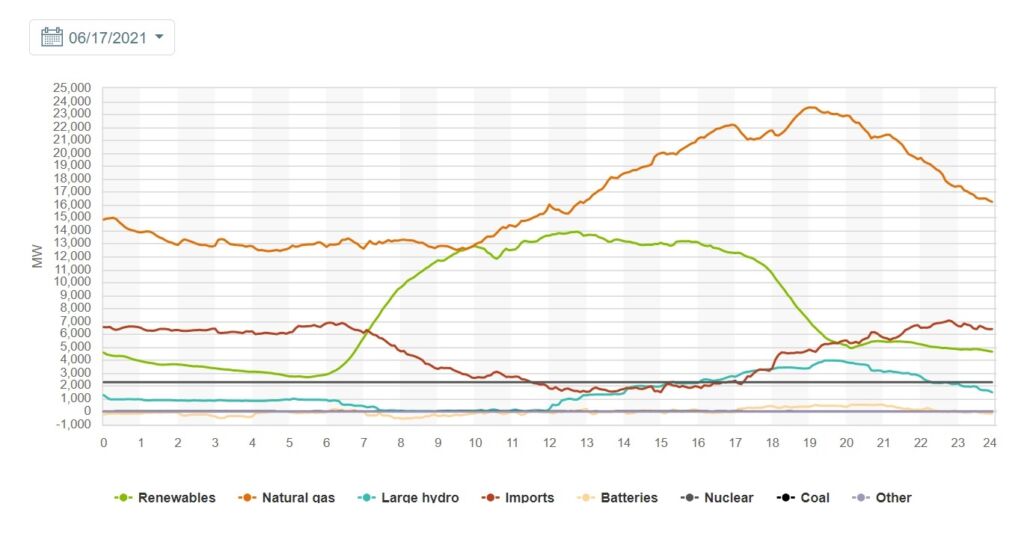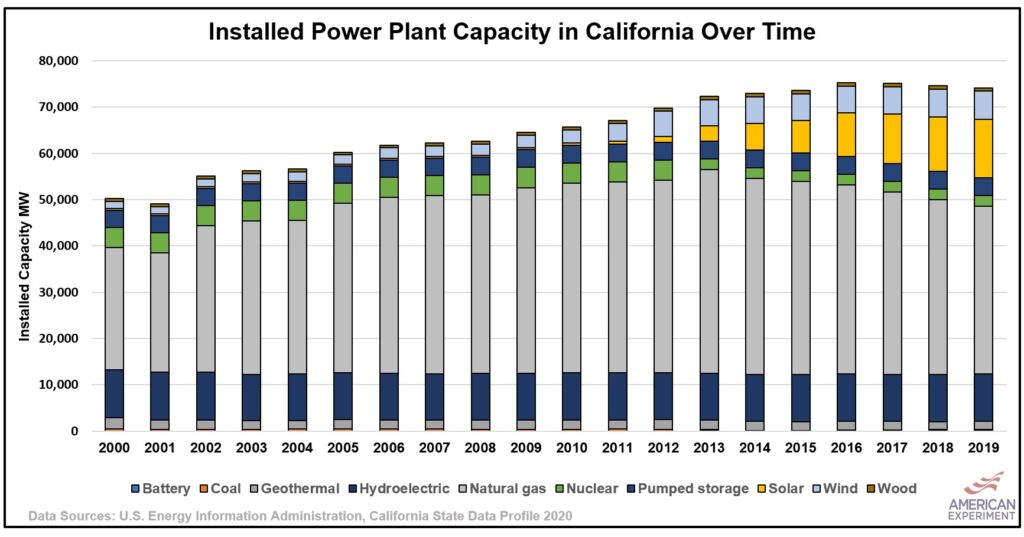California asks consumers to reduce electricity use to prevent blackouts
California’s renewable-heavy electric grid is already struggling to meet demand as temperatures soar.
On Thursday, June 17, 2021, the grid operator in California, the California Independent System Operator (CAISO), pleaded with Californians to reduce their electricity consumption to prevent another round of rolling blackouts.
These calls asking Californians to voluntarily reduce electricity consumption are called “Flex Alerts.” They are issued because California’s grid isn’t able to provide enough electricity from 4 p.m. to 5 p.m. when demand for electricity is high, but electricity generation from solar is declining.
We can clearly see this in the data from CAISO. Renewable generation began to increase in the morning, peaks around noon and begins declining at 4 p.m. when the sun is setting. Although solar production is beginning to fall, demand is soaring as people get home from work and turn on their appliances.

This additional demand is currently met by natural gas-fired electricity and imports of electricity from other states, but bad political decisions in California are shutting down existing natural gas plants and increasingly relying upon solar and wind generation, as you can see in the graph below.
This situation will get worse if the Diablo Canyon nuclear plant is foolishly shut down in 2024 and 2025.

Furthermore, California’s ability to import power from Arizona and Nevada to meet demand is beginning to reach its limits because these states are also reducing the number of reliable power plants they have in operation. This will leave California increasingly dependent upon strategies to reduce electricity use when it is needed most.
What do these strategies look like? CAISO issued the following recommendations below:
Before a Flex Alert is in effect, consumers can take specific steps to manage their
electricity usage to maintain comfort during days that conservation is needed.
Specifically, consumers can: Pre-cool your home by lowering the thermostat;
Use major appliances, like your dishwasher, and clothes washer and dryer
Close window coverings to keep your home or apartment cool
Charge electronic devices
Charge electric vehiclesFrom 5 p.m. to 10 p.m. tomorrow, when the statewide Flex Alert is in effect, consumers
can help by: Setting your thermostat to 78 degrees or higher, if health permits
Avoiding the use of major appliances
Turning off all unnecessary lights
Using fans for cooling
Unplugging unused items
These recommendations are maddening because keeping the lights on should not be a part-time job for electricity consumers. We live in 2021, we put a man on the moon more than 50 years ago, there is no excuse for not being able to produce enough reliable, affordable electricity for all Americans to enjoy.
California’s situation is likely to get worse as the summer drags on because the water level in the Lake Oroville reservoir is falling so low that there not be enough water to continue operating a large hydroelectric plant in two to three months, reports CNN. This would result in hydroelectric generation falling exactly when it is needed most, in the summertime when summer heat sends demand for electricity soaring.
It is vitally important for everyone to know that this situation was entirely preventable, but bad decisions by California politicians promoted renewables above reliability, and now hundreds of thousands of people face the prospect of rolling blackouts.
By shutting down reliable nuclear and natural gas plant, California lawmakers gambled with the grid, and they are predictably losing.